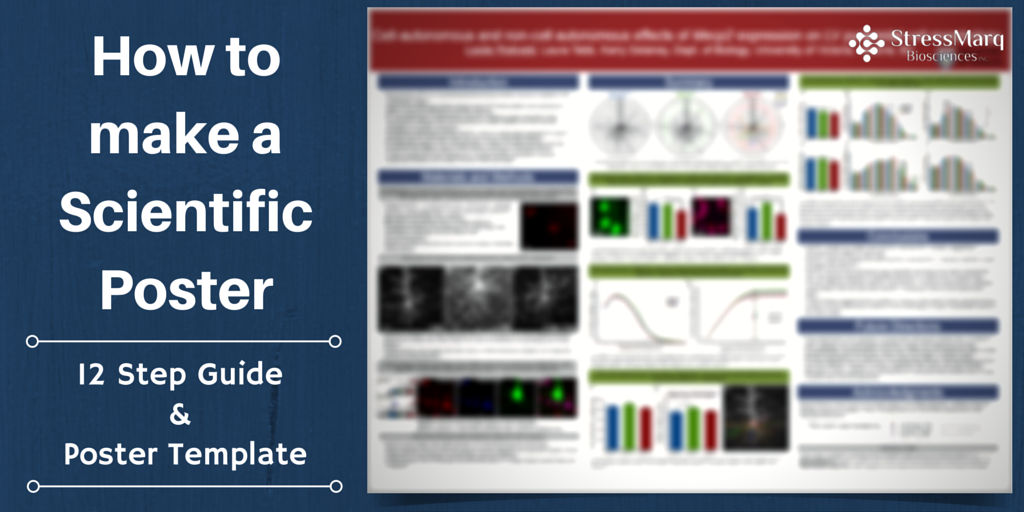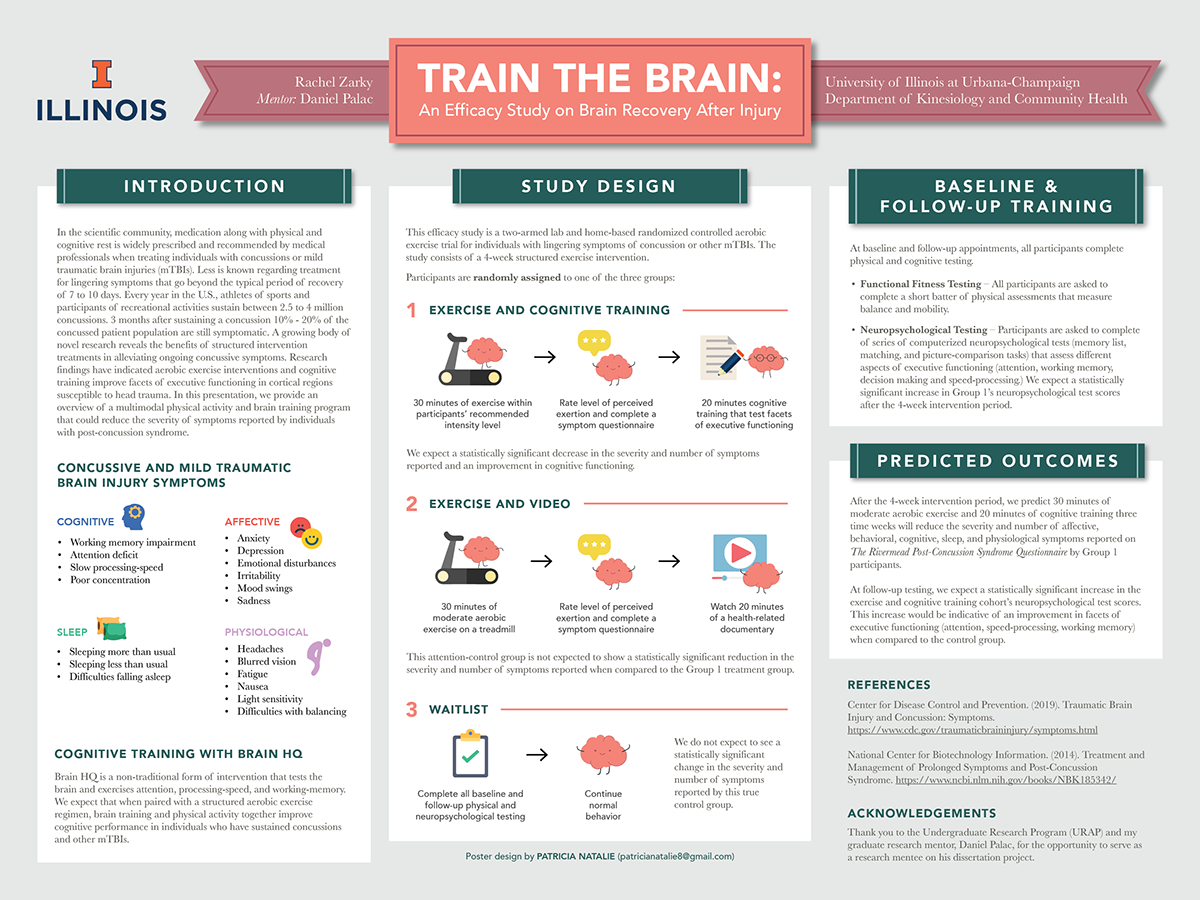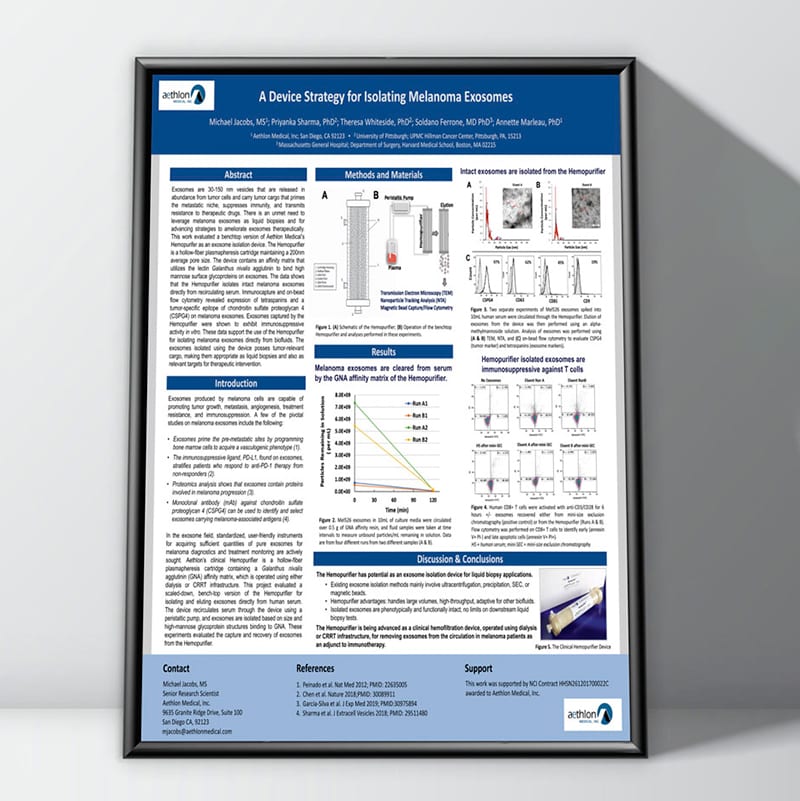Antwort What does a scientific poster look like? Weitere Antworten – What should a scientific poster look like
Like the abstract in a scientific paper, your poster should have sections summarizing the background and rationale, methodology, results, and the implications of your work. Some common sections included in a scientific poster include: Title, Key Finding or Takeaway – Highlight the core message in a catchy way.Scientific posters are usually organized into nine distinct sections. These include: Title, Authors, Abstract, Introduction, Materials & Methods, Results, Discussion, Acknowledgments and References. The sections appear in the order shown above.A poster, like an oral presentation, cannot (and should not) contain all information you have on the topic. Scientific posters should stimulate interest rather than provide a detailed presentation. If all text is kept to a minimum (1000 words), a person should fully read your poster in less than 10 minutes.
What is the standard for scientific poster : Standard size for posters is 91.4cm x 121.9cm (36”x48”), but they can be customized. overall understanding of your subject matter. Divide your information into main sections. Eliminate all but the vital elements of your project.
What not to do on a scientific poster
DON'T write your poster just as if it were a scientific paper. It's not. DON'T waste lots of precious space on messy experimental details (skip a complete Materials and Methods section) or on irrelevant minutiae. Don't display every gel, every sequence, every genotype.
What makes a good scientist poster : Use big font sizes and different font types
They are easier to read from a distance and should be large enough to make spotting keywords easy from a few metres away. When printed, large blocks of text are easier to read in serif fonts and are the best choice for the body text.
How to make your scientific posters stand out
- Engaging from afar.
- Big, clear images and figures.
- Ensure there is a balance.
- Split the layout into columns.
- Consider where the most important findings and figures should be on the poster.
- Use big font sizes and different font types.
- Justify columns of text to the left.
Know the story you're trying to tell
A scientific poster is more than just a collection of information and data; the components should work together to create one cohesive and engaging story that leads viewers to your main conclusion. It also needs to be concise.
How do you make an attractive scientific poster
How to make your scientific posters stand out
- Engaging from afar.
- Big, clear images and figures.
- Ensure there is a balance.
- Split the layout into columns.
- Consider where the most important findings and figures should be on the poster.
- Use big font sizes and different font types.
- Justify columns of text to the left.
Some text boxes too wide (aim for 45-65 characters per line). Text boxes not separated from each other by pleasing “white” space. Text box edges not aligned (distracting). Text justified, which causes bad inter-word spacing.Bad Poster Design: Example
Text box backgrounds are dark, which makes text really hard to read. Text box backgrounds are all different colors, for no reason. Text boxes are different widths. Text boxes not separated from each other by pleasing “white” space.
If you're serious about designing a great poster, it's important to keep the following tips in mind:
- Make sure your poster is eye-catching and visually appealing.
- Keep the design clear and concise.
- Use high-quality images.
- Put yourself in the viewer's shoes.
- Get creative!
What makes a perfect poster : At its core, a poster is made up of four key features: a title, graphic(s), text, and white space. Layout, flow, and color affect the order and style of these four key features.
What are the five qualities of a good poster : Five Characteristics of a Good Poster
- The Poster Content Should be Easy to Understand. As we mentioned earlier, the purpose of a poster is conveying information to a wide audience.
- Appealing Layout and Typography.
- Well Organised and Well-Constructed.
- Clear and Concise Message.
- Appropriate Amount of Text and Graphics.
What to avoid when making a poster
8 Errors while Designing Posters to Never Make
- Unclear Advertising Message.
- Improper Contrasts.
- Incorrect Grid Divisions.
- Images Are Irrelevant With The Poster Theme.
- Multiple Fonts.
- The Poster Contains Too Much Text.
- Saving Poster In The Wrong Format.
- Missing Out On Proofreading.
Fluorescent (neon) color borders just don't cut it for posters. Neither do excessive variations in color (the rainbow look). Forget paisley, tie-dye, stripes, polka dots, and batique. In your graphic items, use color with deliberation; avoid using it for its own sake, and avoid pseudocoloring when possible.Bad Poster Design: Example
Text box backgrounds are dark, which makes text really hard to read. Text box backgrounds are all different colors, for no reason. Text boxes are different widths. Text boxes not separated from each other by pleasing “white” space.
What are the 4 key features of a poster : At its core, a poster is made up of four key features: a title, graphic(s), text, and white space. Layout, flow, and color affect the order and style of these four key features.





